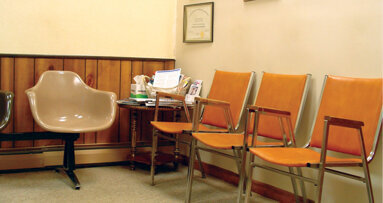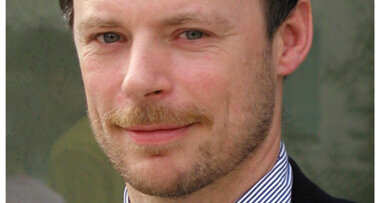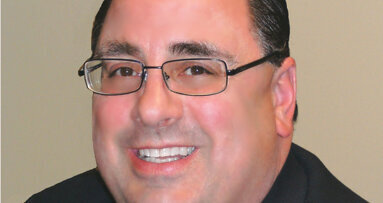Pursue alignment from the top down and bottom up
Once the vision is clear, the next step is making sure that the entire team—front desk staff, assistants, hygienists and laboratory technicians—understands and embodies it. Clinical autonomy can only extend as far as the team is willing and able to support.
Autonomy does not mean going it alone. It means leading by example, practising what you preach and building a practice culture where everyone understands the why behind decisions and believes in it enough to support it.
Protect the culture you build: The laboratory technician lesson
Creating the right culture by hiring the right people is only half the battle. Protecting that culture is where real leadership lies. It is easy to live by your values when everything is going well. The challenge is staying the course when tough decisions test patience, business models and boundaries. Let me give an example of leadership in action.
A few months ago, I made the decision to bring on a second laboratory technician. It was a stretch for the business financially, but I have always believed that, if you lead with integrity, treat people fairly and work hard, the money will follow. I paid both technicians above the market average—not only because I value their skills and experience, but because I respect the cost of raising a family in today’s economy.
The financials, however, did not add up the way I had hoped. After several months, I had to have some difficult conversations with leadership. A clear, data-driven plan was needed—or the possibility of letting someone go would become real, an outcome I was trying to avoid.
I sat both technicians down. I was transparent: for this to work, we needed to be aligned on day-to-day deliverables, goals and new processes. Not only did I need productivity, but I also needed them both to be fully committed. After this conversation, it became clear that one technician understood the assignment and was willing to rise to the challenge, while the other did not and was not.
There was a shift in the office that no leader ever wants to feel—friction, disengagement and resentment. The final straw came on a day when we saw 12 patients. That meant:
- preparing and cleaning the treatment room 12 times;
- reviewing 12 health histories;
- taking 12 sets of radiographs;
- holding 12 consultations;
- verifying 12 insurance plans;
- processing 12 financial applications; and
- providing 12 patients with time, attention and care.
Despite this, I could tell that there was still tension building and one of the technicians was not onboard regarding the practice vision and purpose. As a leader, I had to make a decision that was in the best interest of the business and other members of my team, who were consistently showing up, completing the work and prioritising quality patient care.
I approached the conversation with empathy and conviction. My office manager and I sat down with the dental technician and had an honest, direct conversation. We did not soften the message or avoid the uncomfortable parts. We talked openly about the numbers, workflow issues and impact on the rest of the team. It became clear that something had to change. Together, expectations, gaps and necessary support were identified. It was not easy, but it was necessary.
Structure sets you free: Plan for profit, patients and parenthood



 Austria / Österreich
Austria / Österreich
 Bosnia and Herzegovina / Босна и Херцеговина
Bosnia and Herzegovina / Босна и Херцеговина
 Bulgaria / България
Bulgaria / България
 Croatia / Hrvatska
Croatia / Hrvatska
 Czech Republic & Slovakia / Česká republika & Slovensko
Czech Republic & Slovakia / Česká republika & Slovensko
 France / France
France / France
 Germany / Deutschland
Germany / Deutschland
 Greece / ΕΛΛΑΔΑ
Greece / ΕΛΛΑΔΑ
 Hungary / Hungary
Hungary / Hungary
 Italy / Italia
Italy / Italia
 Netherlands / Nederland
Netherlands / Nederland
 Nordic / Nordic
Nordic / Nordic
 Poland / Polska
Poland / Polska
 Portugal / Portugal
Portugal / Portugal
 Romania & Moldova / România & Moldova
Romania & Moldova / România & Moldova
 Slovenia / Slovenija
Slovenia / Slovenija
 Serbia & Montenegro / Србија и Црна Гора
Serbia & Montenegro / Србија и Црна Гора
 Spain / España
Spain / España
 Switzerland / Schweiz
Switzerland / Schweiz
 Turkey / Türkiye
Turkey / Türkiye
 UK & Ireland / UK & Ireland
UK & Ireland / UK & Ireland
 International / International
International / International
 Brazil / Brasil
Brazil / Brasil
 Canada / Canada
Canada / Canada
 Latin America / Latinoamérica
Latin America / Latinoamérica
 China / 中国
China / 中国
 India / भारत गणराज्य
India / भारत गणराज्य
 Pakistan / Pākistān
Pakistan / Pākistān
 Vietnam / Việt Nam
Vietnam / Việt Nam
 ASEAN / ASEAN
ASEAN / ASEAN
 Israel / מְדִינַת יִשְׂרָאֵל
Israel / מְדִינַת יִשְׂרָאֵל
 Algeria, Morocco & Tunisia / الجزائر والمغرب وتونس
Algeria, Morocco & Tunisia / الجزائر والمغرب وتونس
 Middle East / Middle East
Middle East / Middle East
























































To post a reply please login or register